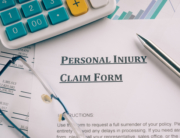Yes, you can seek damages if the accident made your pre-existing condition worse. The insurance companies fight these claims aggressively, but if your facts meet the requirements of the law, it is possible to get compensation for the extent to which your condition is worse than it used to be.
When You Can Get Personal Injury Compensation with a Pre-Existing Condition
The incident must have made your condition worse. You will only get damages for the amount that is worse than before, and not for the underlying condition. For example:
Back Injury
Let’s say that you had surgery five years ago to repair a slipped disc. Since that time, you have experienced occasional back pain and stiffness, mainly during rainy or cold weather. Your doctor told you that arthritis had set in the area and you should take over-the-counter anti-inflammatory medications like ibuprofen as needed for discomfort.
Last week you were in a car crash and broke your back in three places, requiring surgery to insert rods in your back. You can get damages for the worsened state of your back, using the pre-existing condition as the baseline.
Head Injury
A car struck a pedestrian who was walking on the sidewalk. The walker suffered a skull fracture and traumatic brain injury. His lawyers file a personal injury claim against the car driver. In a personal injury lawsuit discovery stage, the lawyers learn that the pedestrian had suffered from migraine headaches off and on for years. If his claim includes migraine headaches, the law will limit his recovery for migraines to an increase in the frequency, duration, or intensity of his migraines. He can claim for the full amount of all the rest of his damages from the car accident.
Medical Malpractice
A kidney patient had one functional kidney and one that had no renal function. She managed to get along without kidney dialysis because one kidney still worked. During surgery to remove a sizeable stone lodged in the functional kidney, the doctor accidentally damaged the organ, and it became non-functional. The patient will have to undergo kidney dialysis multiple times a week until she finds a kidney donor and receives a transplant. The doctor might be liable for the change in the patient’s health and quality of life, due to medical malpractice, even though she already had one diseased kidney.
When a Pre-Existing Condition Does Not Get Compensation
If you had a physical issue before the accident and you have no change after the crash, you will not get compensation for the underlying condition. For example, if the doctor accidentally nicked an unintended area of the functional kidney but it healed, and the patient was then in substantially the same state of health she was before the surgery, she might get damages for any increased expenses the medical mistake created, but the doctor will not have to compensate her for the underlying medical condition.
A New Injury to the Same Area Can Get Compensation
Just because you once injured a part of your body in an accident, does not mean that you cannot recover damages for the future. By way of example, if you fell out of a tree and broke your right leg when you were a kid, and the same leg gets fractured in a car accident twenty years later, you can still attempt to obtain some damages for the new injury.
In this situation, you can claim the income you lost due to the accident, any long-term impacts as well as medical bills including:
- Ambulance
- Emergency room
- Hospital
- Surgery
- Physical therapy
- Rehabilitation
- Prescription drugs
- Equipment like crutches, walker, or wheelchair
You cannot, however, claim any pre-crash expenses related to the old fracture.
What to Expect from the Insurance Company in These Cases
Expect the insurance company to fight tooth and nail when you have a pre-existing condition. They will claim that all of your current problems were from your pre-existing condition and not from the current accident. They will say that you are trying to cash in on an old injury at the expense of the person at fault in the current incident. These cases are an uphill battle, but we can win.
The insurance company will be particularly aggressive if your previous condition causes you to be more susceptible to injury or to suffer a more severe injury than expected under the circumstances. The law calls this the eggshell skull rule, or “you take your plaintiff as you find him.” In other words, the at-fault party has to pay for the damages an individual suffers, even if they far exceed what would be typical in the situation.
Proving Your Medical Damages When You Have a Pre-Existing Condition
We will, in essence, have to perform double the work of a standard personal injury claim in these cases. In the typical claim, we have to prove the losses you suffered because of the accident. In a case involving a pre-existing condition, we have to establish your medical status before the crash, and we have to prove the damages you incurred because of the most recent incident.
Here are the steps to proving your medical damages with a pre-existing condition:
- We will gather your medical records from the pre-existing condition to paint a clear picture for the judge of what your status was previously.
- We will collect the records from your medical treatment for the current injury, work with specialists, and use experts to review the documents and render an opinion as to how the injury will impact your life.
- We will show the judge how the new injury has exacerbated your previous condition, in other words, draw a line from the point of your status before the accident to what your life is like now.
Handling cases involving previous injuries or conditions is challenging, so you should work with a personal injury lawyer if you find yourself in this situation. Please call the Montero Law Center at 954-767-6500, so that we can evaluate your claim, provide a free case review, and tell you if you might be entitled to compensation.
 English
English  Español
Español 




